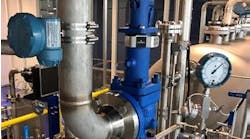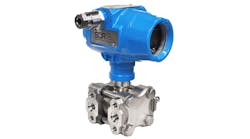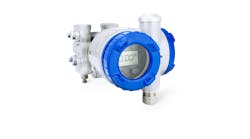Every winter when ambient temperatures sank into the teens (below -7° C), the differential pressure (DP) across the reactor became erratic. With millions of dollars’ worth of relatively soft precious-metal catalyst contained inside, no one wanted to believe this reading was for real. Both reactors’ DP showed fluctuations—was the cold causing some phenomenon in the reactor beds, or was this just a measurement anomaly?
If you’re reading this column anywhere north of the 40th parallel, chances are you’ve already had enough winter to be dreaming of tropical escapes. More cold weather looms, and it will likely take its toll on unprotected process equipment and instrumentation. Putting practically the entire process indoors is sometimes a necessity, but even such enclosures are subject to the extremes of the environment, as is their supply of energy—it seems everyone has a story about when the boilers all went down in January. For those caught off guard, thawing out a process plant in winter is motivation enough to ensure it doesn’t happen twice.
If you watch the videos on the Chemical Safety Board site you can see examples where unforeseen freeze-ups are not only a nuisance, but also potentially deadly. As the instrument or controls specialist, you may not be personally accountable for winterization of the process vessels and piping, but frozen instruments derail control schemes and errant indications can create distractions and unwarranted worry. If you succeed in delivering a system where the truth and validity of measurements are rarely questioned, you have a responsibility to ensure they work equally well in the extremes of the weather.
If accuracy or precision is important—for example, a DP today of 2.1 versus a DP of 2.0 last month is meaningful to those watching and analyzing the process—consider the raw effect of temperature on your transmitters. Not that long ago, temperature effects accounted for most of the uncertainty of the pressure reading. If you are employing a 20-year-old transmitter, the effect might be more than you think. Consider specifying thermostatically controlled, electrically heated boxes to maintain the transmitter sensor and electronics at a fixed temperature ± 5-10 degrees. If you heat instrument boxes with steam, you can obtain thermostats for steam heaters, too—check with your favorite instrument enclosure manufacturer. With sensitive instrumentation, maintaining relatively constant temperatures is an aid to accuracy and repeatability as well as freeze protection.
If you can use the digital HART signal in your control system, or employ WirelessHART or fieldbus, many if not most devices provide a temperature measurement as a secondary variable to pressure. If these can be displayed on the DCS, operators can be encouraged to monitor them as an early warning of failed tracing or impending freeze-ups. I would refrain from creating any alarms per se unless said alarms pass muster with your site’s alarm philosophy. How you bring them in is important—we have tried OPC over the years and the reliability of servers can diminish the credibility of the indications. Bring in a status for these secondary measurements as well.
Some extra clever devices have even more capabilities that can whisper to us about subtle changes, some of which can indicate issues. You can purchase pressure transmitters that monitor the (relatively) high-frequency noise in the pressure signal. With a little “training” and tuning—effort that may only be justified for the most critical measurements—the device can distinguish between normal noise and increasing or decreasing noise resulting from one or both impulse lines freezing up. The secondary temperature can only alert us to a cold box, but the noise signal can tell us when the tracing on the impulse lines is failing as well.
If only the plant’s reactor differential pressure transmitters had such intelligence, the cause of erratic readings in cold weather might have been more apparent. It was eventually revealed that the long capillaries connecting each leg of the DP transmitter to the remote seals contained a fill fluid that became extremely viscous when the ambient temperature was low, creating a phase shift between the unequal lengths of capillary.
A little insight could have saved the plant manager some heartburn. Help your process stakeholders listen to the subtle ways instruments can get us through the winter unscathed.






